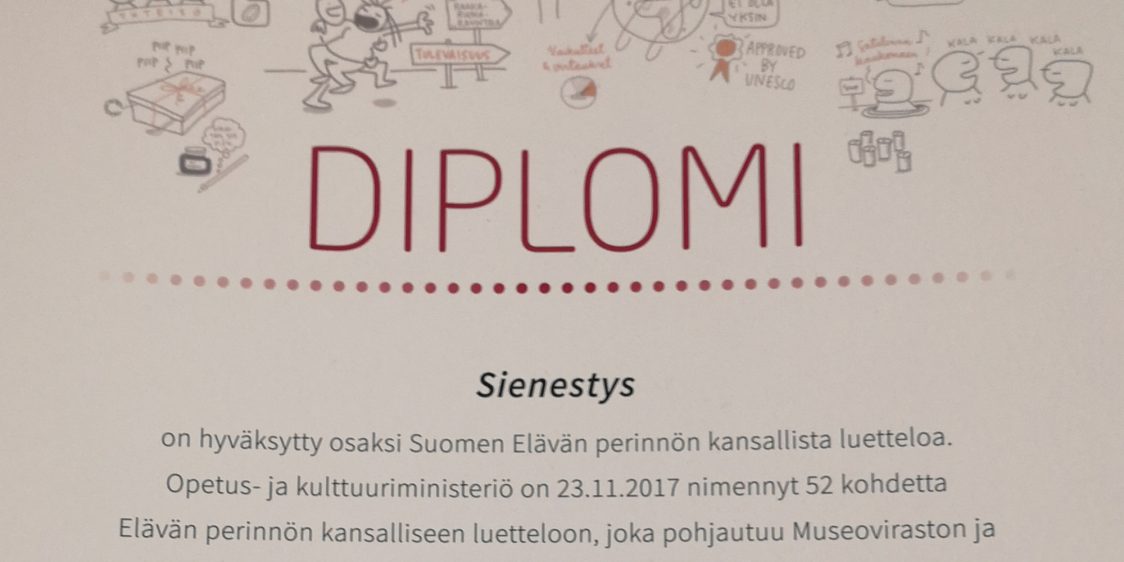
52 elements to the National Inventory
The Ministry of Education and Culture has nominated 52 elements for inclusion in the National Inventory of Living Heritage.
The Ministry of Education and Culture has nominated 52 elements for inclusion in the National Inventory of Living Heritage. The National Inventory will be updated regularly, and the next opportunity to submit applications will be in 2019.
The National Inventory of Living Heritage covers a wide selection of fields within intangible cultural heritage from nearly all parts of Finland. The National Inventory includes several traditional festivities, such as taking candles to the cemetery on Christmas Eve, the declaration of Christmas Peace in Turku, the conferment of master’s degrees and the lighting of Easter Fires. There is also a wide range of handicrafts in the inventory: glass blowing, the Korsnäs sweater and the making of national costumes. The inventory includes several nature-related elements, such as snow games, mushroom picking, building and sailing on clinker boats and the fishing tradition in the rapids of the Tornionjokilaakso river valley. Performing arts also feature in the inventory: the Kaustinen style of playing the fiddle, Finnish tango, the singing tradition of the Roma people, the minuet and open air dancing. The list also includes food traditions, games and oral traditions.
The selection of an element into the National Inventory of Living Heritage is a recognition to the communities that work with the traditions. The inclusion in the Inventory makes the traditions more visible than before. At the same time, it brings them one step closer to being recognised internationally.
The meaning of intangible heritage to people and the living and changing nature of these traditions were important features while naming elements to the national inventory. The inventory includes both well-knows living traditions practiced by large groups of people, but also traditions from small communities.
The UNESCO Convention for the Safeguarding of the Intangible Cultural Heritage was adopted in 2003, and Finland signed the Convention in 2013. The UNESCO convention also includes creating an inventory of intangible cultural heritage at the national and international levels. The resulting inventory is a tool which can be used to identify, describe and convey knowledge about and information on living traditions.
The National Inventory of Living Heritage is based on the proposals of The Finnish Heritage Agency and the advisory group on intangible cultural heritage. Practitioners and other experts in the various fields of ICH have also assessed the proposals. Later, it is possible for elements in the National Inventory to be nominated for inclusion in UNESCO's international lists of intangible cultural heritage. The Ministry of Education and Culture decides on Finland’s nominations. A maximum of one national nomination per year can be submitted to UNESCO. In addition, it is possible to submit multinational nominations or apply for the inclusion in the Register of good practices.
The next opportunity to apply for inclusion in the National Inventory will be in 2019 at the earliest. The National Inventory is based on the Wiki-inventory for Living Heritage to which elements can be submitted at any time. The Wiki-inventory already includes 140 articles submitted by over 180 communities.
The proposal with short presentations of all elements in English can be found from here.
Contact
Leena Marsio, Finnish Heritage Agency, leena.marsio(at)museovirasto.fi, tel. +358 (0)295 33 6017
Mirva Mattila, Ministry of Education and Culture, mirva.mattila(at)minedu.fi, tel. +358 (0)295 33 0269